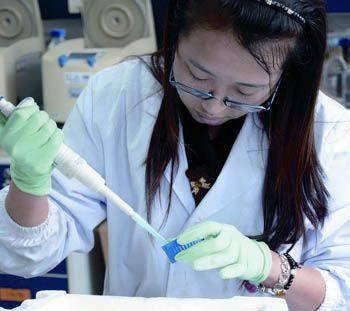Sci-Tech
China to Continue Scientific Research in the Polar Regions in 2012
Chinese scientists will conduct a fifth Arctic expedition this year, said Lu Bin, a senior official with the State Oceanic Administration (SOA). In 2012 China also plans to finish building its Kunlun Station, the nations third base in Antarctica. China is keen to enhance cooperation with other countries, including Canada and Iceland, in exploring the Arctic and push forward more joint research agreements. It also intends to become more involved in Arctic and Antarctic affairs. Chinas 28th expedition to Antarctica is on its way home after completing research work there. The SOA is already making preparations for a subsequent expedition.
China Completes System to monitor earths Crust
China has completed a system designed to monitor the movement of the earths crust and predict earthquakes which will also be used for weather forecasting and geological research. China kicked off the project in December 2007, with a hefty investment of RMB 524 million. The design and construction of the system was jointly undertaken by official bodies including the China Earthquake Administration, the Chinese Academy of Sciences and the National Administration of Surveying, Mapping and Geoinformation. Based on satellite navigation, it employs a network of 260 constant and 2,000 intermittent observation stations with data-processing technology. A 35-member evaluation panel agrees that the project is a comprehensive, precise and versatile resource of geoscientific information. The new network joins the U.S.s Plate Boundary Observation system and Japans GEONE as the most precise means of observing the movement of the earths crust.

Chinese Scientists Sequence Sweet Orange Genome
Chinese scientists have sequenced the genome of the sweet orange (Citrus sinensis), an achievement expected to help scientists understand the complex genetic make-up of the crop in order to improve quality and yields. After a years effort, a team of horticulture, genomics and bioinformatics experts from Central China Agricultural University in Wuhan, Hubei Province, successfully assembled and annotated the genome sequence of the plant, marking the first time that Chinese scientists have independently determined the genome sequence of a fruit crop. Deng Xiuxin, an academician with the Chinese Academy of Engineering and the leader of the research team, compared sequencing the genome of the sweet orange to opening the “black box” of the crops growth patterns, a move that could facilitate the improvement of many of the fruits traits, including color, taste, yields and disease resistance. The sweet orange, which originated in China, is the most commonly grown fruit tree, and its production accounts for about 60 percent of total citrus production. China is the worlds largest grower of citrus, with an output of 26.45 million tons in 2010. The sweet orange is mostly poly-embryonic and highly heterozygous, meaning it has dissimilar pairs of genes for any hereditary characteristics and is thus plagued by sterility. Determining its genetic make-up provides a sound scientific basis for further genetic and breed development work.
Chinese Chemist Wins Anselme payen Award
Chemist Zhang Lina, an academician with the Chinese Academy of Sciences, became the first Chinese scientist to win the annual Anselme Payen Award since it was established in 1962 to honor outstanding professional contributions to the science and chemical technology of cellulose and its allied products. Zhang, a professor at Wuhan University in central Chinas Hubei Province, has devoted herself to basic and applied research on biomass natural polymeric material science. She and her team have successfully created useful materials out of agricultural waste such as bagasse, crab shells and bean dregs through polymer physics and green technologies.

